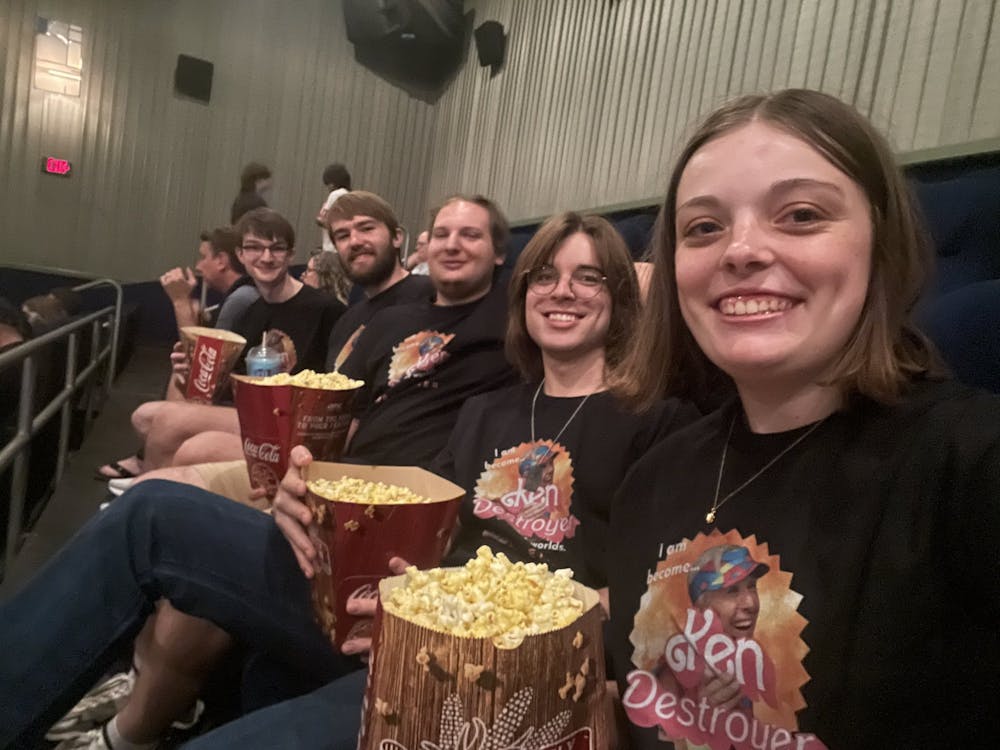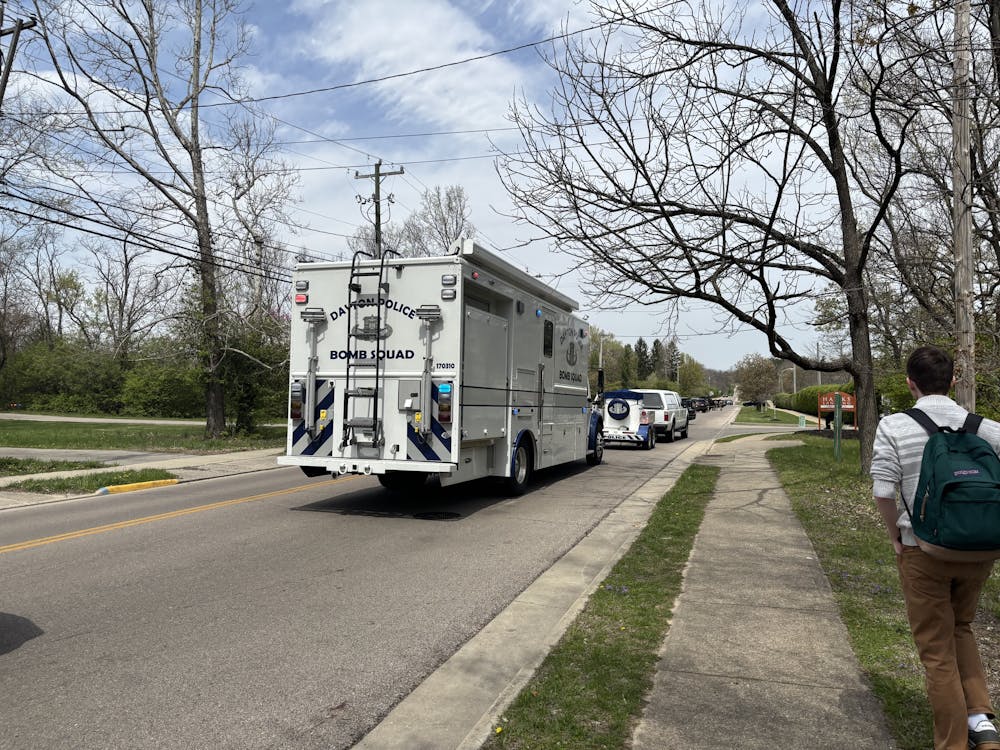As a fan of cinema, it’s very easy to get disillusioned with the current state of the industry.
Between — well, take your pick of threats to film as we know it — it’s been an exhausting past several years. Fantastic films are still regularly being made, but the idea of the classic trip to the movies feels like it’s being erased in real-time.
There have, of course, been exceptions. “Spider-Man: No Way Home” became the first film post-pandemic to cross the $1 billion mark toward the end of 2021, and last year had the double-whammy of “Top Gun: Maverick” in the summer and “Avatar: The Way of Water” in the winter, glimmers of brightness in an otherwise bleak series of box office returns.
Then, this year, came “Barbenheimer.”
The timeline is hard to pin down, but at some point audiences collectively realized that Greta Gerwig’s “Barbie” and Christopher Nolan’s “Oppenheimer” would release together on July 21. What followed was what can only be described as a phenomenon.
Custom posters and t-shirts, plenty of memes and a good heaping of irony built up this date as a true event. And the best part was that it felt entirely organic; neither Warner Bros. (distributing “Barbie") or Universal (distributing “Oppenheimer”) really acknowledged it, leading to a campaign that was driven by word-of-mouth through social media. The fever of anticipation confounded even box office predictions, which only climbed higher and higher for both films as the crowds gathered that July weekend.
Crowds that included me and my friends.
On Saturday, July 22, we arrived bright and early at 10 a.m. to the AMC West Chester 18 for our 10:30 a.m. showing of “Oppenheimer” in IMAX, a showing that was almost entirely sold out. Sporting our brand new “I am become Ken, destroyer of worlds” shirts (courtesy of our Managing Editor Luke Macy), we settled into the three-hour drama with an excitement shared by the entire theater around us.
I was worried going in that the crowd would be too rowdy, taking away from the serious nature of “Oppenheimer’s” tone and subject, but they were largely respectful the whole time. Some periodic chuckles at the film’s few comedic moments (and every time Einstein showed up) and some gasps of awe during the Trinity test only occasionally permeated, leaving us to sink into the film’s excellence.
That said, due to both how early we saw it and the film’s somewhat depressing ending, we left the theater already pretty drained. We trudged over to the nearby Barnes & Noble to kill some time before our 6:00 p.m. showing of “Barbie,” which is where it really sunk in how big “Barbenheimer” was.
On the walk over we passed several other groups with their own unique shirts and outfits. The parking lot was close to capacity with people coming and going. Even Barnes & Noble got in on the action, with custom displays for historical novels about the atom bomb and various pieces of Barbie media as well as an impromptu sale at the store’s Starbucks for people wearing Barbenheimer clothing.
Even if you weren’t participating, you couldn’t escape it.
Enjoy what you're reading?
Signup for our newsletter
By the time we regrouped at the AMC Classic Hamilton 8 for “Barbie,” our spirits had mostly lifted and we were ready for the bright and campy fun of Gerwig’s interpretation on the colossal brand.
This time the crowd was much more vocal throughout the film, but due to its nature as a comedy that didn’t bother me as much, and in fact added to some parts thanks to a couple of on-point reactions. We all came out grinning and abuzz about our favorite moments, calling each other Barbie and referring to each other’s Kenergy.
And even at 8:30 p.m. as we were leaving, there was still an overabundance of traffic to catch the theater’s latest showings.
Thinking about that day in retrospect, there are two major takeaways I have. The first is practical: “Barbenheimer” proves that people haven’t completely abandoned theaters.
The box office returns of both films show this abundantly, but more impressive to me are the clear cultural imprints. Discussions surrounding the films didn’t vanish after they came out, continuing even past their second weekend in theaters which normally would have other new releases swoop in and steal that thunder (as happened to “Mission: Impossible - Dead Reckoning Part 1,” which came out just a week before “Barbenheimer”).
My second takeaway is more personal: “Barbenheimer” is a reminder of how powerful film can be as a communal experience.
I’m not one to shy away from going to see movies by myself, but one of the best things about art is being able to share your experience with it; to come out of a movie and endlessly ramble on about it with someone else, to dissect and analyze the themes, to joke about your favorite moments. There’s just something about having people next to you while watching something that elevates it beyond just entertainment.
For one weekend — and if the box office holds, multiple weekends after — millions of people rediscovered the joy of the movie theater together.
This holds true for my own group. By the time I headed home after spending the entire day with my friends, I felt closer to them than ever. Sure, general togetherness helps, but I like to think the movies helped by giving us a platform to spend that time and share in each other’s excitement.
It turns out that we needed “Barbenheimer” just as much as “Barbenheimer” needed us.




